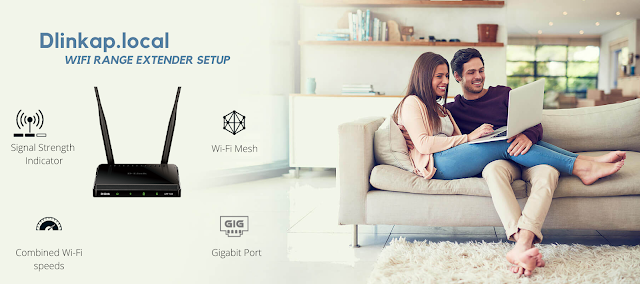How to Set Up and Optimize Your Dlinkap.local Network
Are you looking to set up and optimize your Dlinkap.local network? In this article, we will guide you through the process step by step, ensuring that you have a seamless and efficient network for all your online needs.
Understanding Dlinkap.local
Dlinkap.local is a web address that allows you to access the settings and configuration of your D-Link wireless range extender. By accessing this address, you can set up and manage your network to ensure optimal performance and coverage throughout your home or office.
Step 1: Physical Setup
Before we dive into the configuration process, let's start with the physical setup of your D-Link range extender. Follow these steps:
- Find a suitable location: Place your range extender in a central location, preferably midway between your main router and the area with poor Wi-Fi coverage.
- Power it up: Connect the range extender to a power outlet and wait for it to boot up. Ensure that the power indicator LED is solid green.
- Connect to the range extender: Use your computer or mobile device to connect to the Dlink extender login network. Look for the Wi-Fi network name (SSID) that starts with "D-Link_EXT."
Step 2: Accessing Dlinkap.local
Now that your range extender is powered up and ready, let's access the Dlinkap.local web interface to configure your network settings. Follow these steps:
- Open a web browser: Launch your preferred web browser (e.g., Chrome, Firefox, Safari) and ensure you have a stable internet connection.
- Enter the web address: In the address bar, type "Dlinkap.local" and press Enter. You will be directed to the Dlinkap.local login page.
- Log in to the web interface: Enter the default username and password for your range extender. If you haven't changed them before, use "admin" for both fields. Click "Login" to proceed.
Step 3: Configuring Your Network
With access to the Dlinkap.local web interface, you can now customize and optimize your network settings. Here are a few essential configurations to consider:
- Network Name (SSID): Set a unique and recognizable name for your extended Wi-Fi network. Avoid using common names and ensure it reflects your personal or business identity.
- Security Settings: Enable a strong password and encryption method to secure your network from unauthorized access. Use a combination of uppercase and lowercase letters, numbers, and special characters to create a robust password.
- Channel Selection: Opt for automatic channel selection or manually choose the channel with the least interference from neighboring networks. This will ensure minimal signal interference and optimal performance.
- Range Extender Mode: Select the appropriate mode based on your network requirements. You can choose between Extender Mode, Access Point Mode, or Bridge Mode, depending on your setup and connectivity needs.
Step 4: Finalizing the Setup
After configuring your desired settings, it's time to apply the changes and complete the setup process. Follow these steps:
- Save the settings: Click on the "Save" or "Apply" button within the 192.168.0.50 web interface to save your configurations.
- Reconnect to the extended network: Once the settings are saved, disconnect from the Dlinkap.local network and reconnect to the newly extended Wi-Fi network. Use the updated network name and password for authentication.
- Test the connection: Verify the functionality of your extended network by testing the Wi-Fi signal strength and internet connectivity in different areas of your home or office. Make adjustments if necessary to improve coverage.
Conclusion
Congratulations! You have successfully set up and optimized your Dlinkap local setup network. By following the steps outlined in this article, you now have a reliable and efficient Wi-Fi network that caters to your specific needs. Enjoy seamless connectivity and enhanced coverage throughout your space.



Comments
Post a Comment